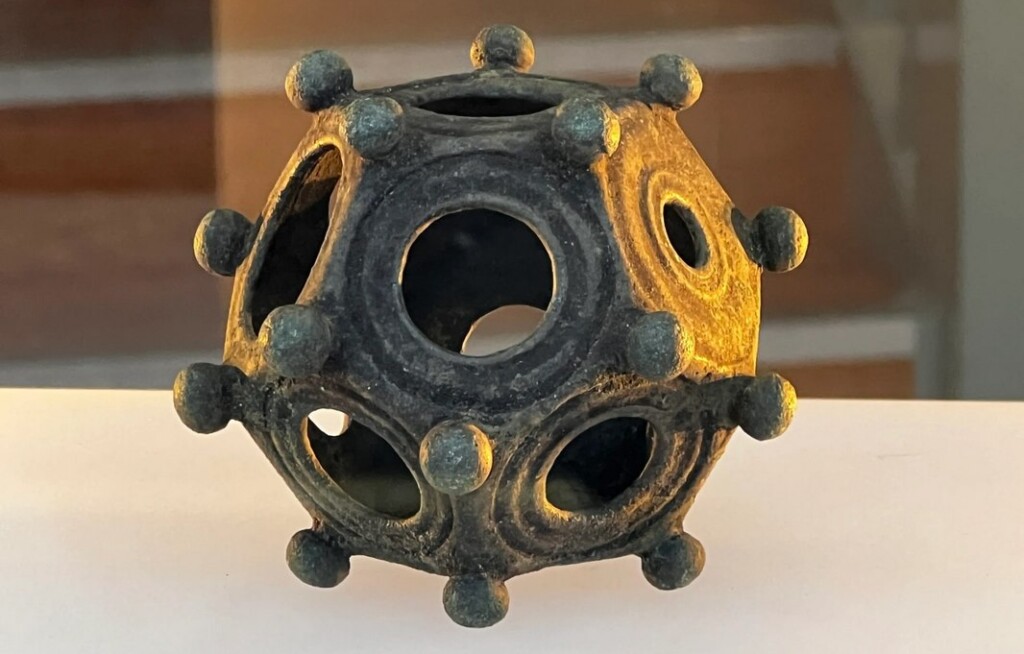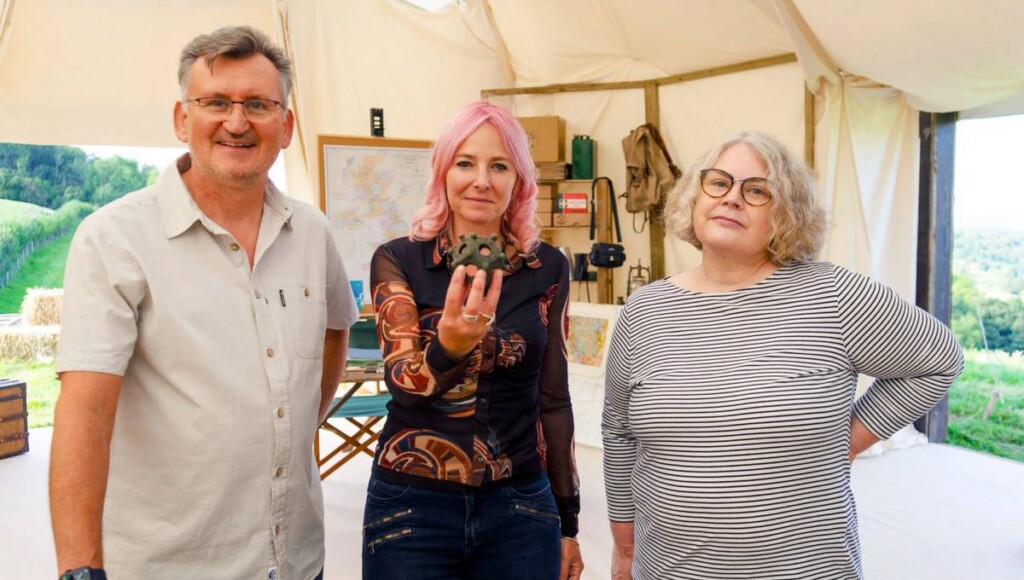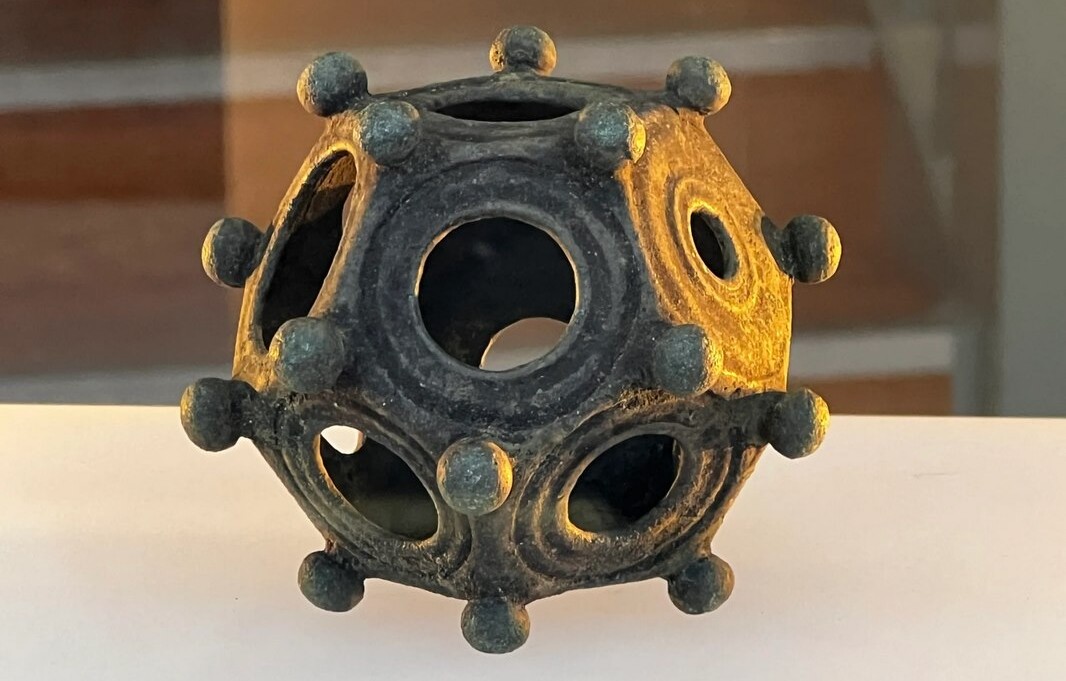begin quote from:
https://www.goodnewsnetwork.org/over-100-strange-12-sided-objects-from-roman-times-have-been-found-no-one-knows-what-theyre-for/

Across Europe, but particularly in Britain where residents love a weekend out with a metal detector, dozens of ‘dodecahedrons’ from the Roman Empire have been found, and no one knows what they’re for.
One was found in northern Belgium in February of last year, but another was found just this month in the English town of Norton Disney. There are around 130 examples of this strange item that have been found across the Roman world, and 33 in Britain alone.
Dodeca signifies twelve, so it’s a twelve-sided object—hollow, and with round openings on each pentagonal face. Each point is embellished with a sphere, and the dodecahedrons are typically made of bronze, copper, or a mixture of metals and alloys.
That’s about all science knows for sure, and beyond that, hypotheses that they were ritual devices, weapons, personal ornaments, religious objects, and even a kind of precision tool have all been put forward.
Being that they range in size and weight wildly, the idea of a weapon, such as the ball of a medieval morningstar, seems unlikely. Personal ornamentation also seems beyond the pale, since some are quite heavy, and if strung around the neck would be terribly uncomfortable.
A suggestion that they might have been precision measuring instruments could also be rationally ruled out, a press release from Belgian antiquities authorities stated last year, since how could you measure things accurately with a tool that’s always a different size, and couldn’t be placed fast against something on account of the metal spheres.
OTHER NEWS LIKE THIS: This Lost Roman Era ‘Miracle Plant’ May Have Been Rediscovered
But the find in Belgium was just a mere fragment, and over the weekend in Britain, a volunteer team of metal detectives and hobby archaeologists found an intact dodecahedron, which, according to their analysis, was purposely buried around 1,700 years ago.
They found it in an area of Lincolnshire where Roman artifacts had previously been discovered, and claim it’s as large as a grapefruit.

“A huge amount of time, energy, and skill was taken to create our dodecahedron, so it was not used for mundane purposes, especially when alternative materials are available that would achieve the same purpose,” write the fine folks at The Norton Disney History and Archaeology Group. “The most likely use we think is for ritual and religious purposes.”
Today, dodecahedrons serve essentially only one common purpose in our society—as dice— for playing Dungeons & Dragons and other tabletop miniature games.

No comments:
Post a Comment